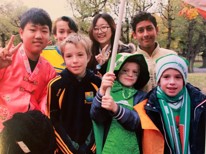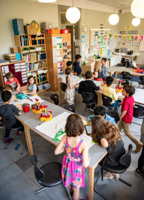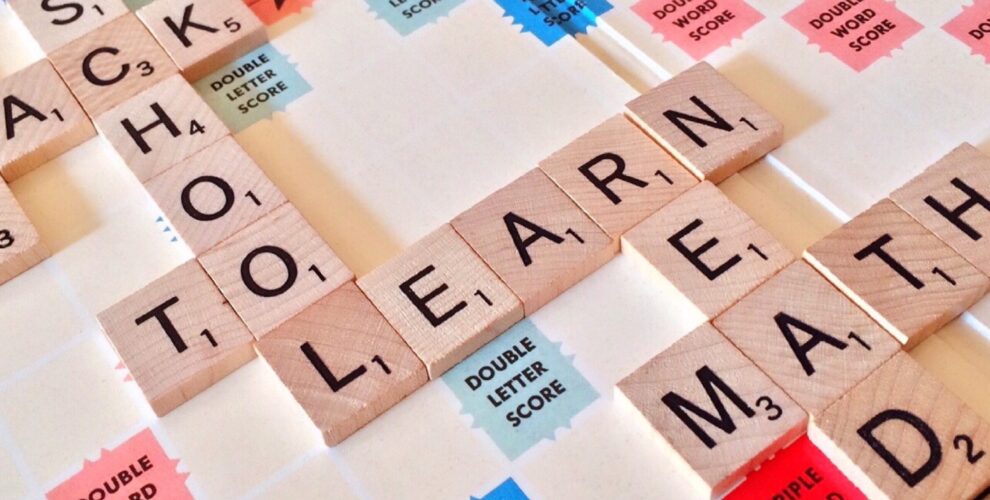English as an Additional Language: an individual journey
Although families at SIS come from all around the world and have enormously different cultural backgrounds, as an international community there are some experiences that we all share. We travel to new cultures, live in entirely different environments, and make new friends in new places. And naturally, we often travel as families.

These opportunities in life are amazing and greatly beneficial, but they can be accompanied by various concerns. There may be a feeling, in the back of our minds, that our children will have to manage various upheavals and challenges. Language acquisition is one of those challenges.
Acquiring a new language is challenging on many levels and every child will experience their own individual journey. How each child navigates their journey depends on many factors. Understanding this means it’s with great experience and thoughtful direction that SIS’s Primary English as an Additional Language (EAL) teachers guide their students in learning English in the best possible way.
SIS parents have entrusted giving their children the best possible start in language acquisition to our three Primary EAL teachers, Gina Stavert, Linnea Kinch, and Natasha Ålund as shown in the images at the end of this article.
Gina Stavert very kindly spoke to the Dispatch to offer us an insight into how our EAL teachers guide students through the whole process, and what parents can do to provide the very best support.
Let’s start by painting a quick picture of what students experience in a practical way. EAL in Primary starts from Kindergarten and continues to 5th grade. EAL students attend classes 5 times a week. Additionally, during World Languages lessons (languages offered at SIS other than English), students can attend EAL lessons instead. These lessons are called EAL Extension and cover vocabulary and language skills related to whichever current unit the students are working on in the IPC.

EAL focuses on the 4 skills of listening, speaking, reading and writing, which are the same skills students acquire in their regular classes. Besides teaching these skills, EAL also focuses on developing the nuances of English, for example, by using guided reading to see how different stories are written and the expressions used at different times. Even at this early stage, EAL guides students though formal and informal usage and helps them to recognise social context. Or in simpler terms, how you speak to your friend is different than how you speak to the Principal!
It’s very rewarding for our teachers when students do a mainstream trial for 6 – 8 weeks, where the students get to experience learning in the classroom, with the support of the EAL and classroom teachers, and discover whether they are ready to continue. If students cope well it’s time to say goodbye to the EAL class and their EAL teachers. “It’s strange,” says Gina with a smile, “but in some ways my job is to get rid of my students, to say goodbye”.
Before saying goodbye though, families have to say hello! When families with EAL students first arrive at SIS, the Primary EAL teachers hold a coffee morning to get to know them, explain what parents should expect and offer tips on how to survive the beginning of EAL. This meeting is essential because one of the first pieces of advice is to keep lines of communication open between parents, the classroom teacher, and the EAL teacher. Face to face meetings are a great start.
When children begin attending a new school, learning can be an emotional journey too. In the beginning, EAL students may really engage and do their best. Everything seems so exciting, but eventually when the honeymoon period plateaus the interest and energy can diminish. This is the point where friendships with other families really help. Playdates (which can be done safely with proper social distancing, or digitally) allow for the language of play to bubble through. And as we all know, when children are happy things are easier, they’ll be happy to go to school and meet their friends. Consequently, they may well engage more because they will want to communicate more richly.
Another essential piece of advice is to be patient and trust the process. The language will come. With some students, there may be a silent phase that can last months, where students may be very hesitant to speak. But, eventually, they build confidence and no longer feel intimidated. Soaking themselves in the EAL environment means after a time they’ll be correcting their parent’s English!
The language environment of the home is an important factor and one that is sometimes misunderstood. The stronger a learner is in their own language the easier those skills transfer to a new language. Sometimes parents imagine that because their child is learning English, they should have English at home too, but this is actually not true. Our EAL teachers always emphasise to parents that studies have shown that supporting the mother language of the home makes it easier to acquire a new language. SIS is a strong advocate of multilingualism which allows students to think about concepts in their own language and talk about things at home in their own language.

So, it turns out that EAL isn’t just a class, and learning a language doesn’t just happen in isolation. Learning a language is a full immersion experience that includes parental help, the home environment, cross-subject cooperation with planned activities around the IPC units, and social experiences with other families and children. And it’s an emotional experience that when managed carefully can be rich and rewarding.
This full immersion simply works. EAL teachers see over and over again that when you expose students to all kinds of interesting things, let them explore, give them different opportunities and allow them to bring this back to the classroom (with a strong mother tongue from home), then the language literacy will come. In fact, by following the advice of our EAL teachers the language acquisition requirement of being an international family need not be a concern at all.
Thanks so much to our Primary EAL Teachers, Gina Stavert, Linnea Kinch, and Natasha Ålund!










